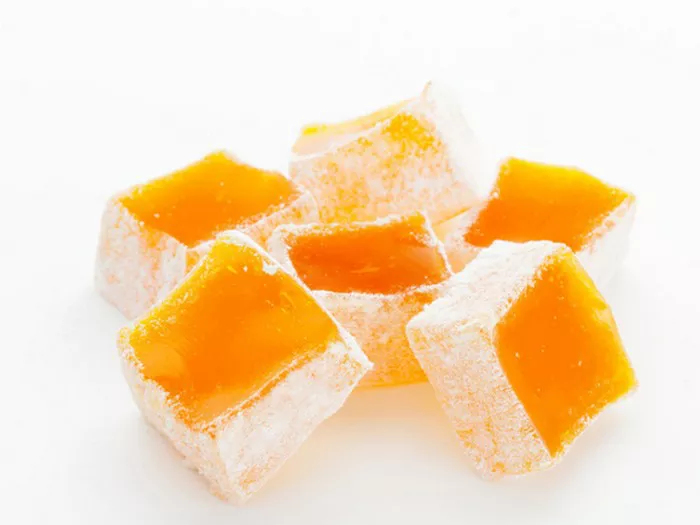Oily skin is often one of the main contributors to acne, as excess sebum production can clog pores and create a breeding ground for acne-causing bacteria. For individuals with oily skin, finding the right acne cream can be challenging. The right product needs to effectively target acne without worsening the oil production or causing additional skin issues. This article will explore the best acne creams for oily skin, the ingredients to look for, and how to incorporate acne creams into your skincare routine for optimal results.
Acne is caused by a combination of factors, including overactive sebaceous glands, hormonal changes, and the buildup of dead skin cells. For those with oily skin, managing oil production while treating acne is essential. Choosing a cream that balances these factors can make a significant difference in how effectively acne is treated. The right acne cream for oily skin should target acne without clogging pores or making the skin feel greasy.
Understanding Oily Skin and Acne
Oily skin produces excess sebum, a natural oil that helps keep the skin hydrated and protected. However, when the sebaceous glands produce too much oil, it can mix with dead skin cells and clog pores. This creates an environment where bacteria can thrive, leading to the development of acne. People with oily skin are more prone to developing acne due to the excess oil blocking the pores, leading to breakouts.
While some level of oil is essential for maintaining healthy skin, too much oil can cause skin problems, including acne. Therefore, an acne treatment for oily skin needs to address excess oil production, reduce inflammation, and prevent clogged pores. Additionally, individuals with oily skin should choose products that don’t exacerbate the problem by being too heavy or greasy.
Key Ingredients to Look for in Acne Creams for Oily Skin
When selecting an acne cream for oily skin, it’s essential to look for ingredients that address the causes of acne while being gentle enough not to irritate or clog the pores. Here are some key ingredients that are effective for oily skin:
Benzoyl Peroxide
Benzoyl peroxide is one of the most well-known and effective ingredients in acne treatment. It works by killing the bacteria that cause acne, reducing inflammation, and helping to unclog pores. For oily skin, benzoyl peroxide is especially beneficial because it helps control the excess oil that contributes to acne. While effective, benzoyl peroxide can cause dryness or irritation in some people, so it’s essential to start with a lower concentration and gradually increase the amount if necessary.
Salicylic Acid
Salicylic acid, a beta-hydroxy acid (BHA), is another popular ingredient in acne creams, particularly for those with oily skin. Salicylic acid works by exfoliating the skin and breaking down the dead skin cells that can clog pores. It also has anti-inflammatory properties that can help calm redness and swelling around acne lesions. Salicylic acid is oil-soluble, meaning it can penetrate deep into the pores to clear away excess oil and debris, making it especially effective for people with oily skin.
Niacinamide
Niacinamide, also known as vitamin B3, is a powerful anti-inflammatory ingredient that helps reduce redness and swelling. It also plays a significant role in regulating sebum production, making it an ideal ingredient for individuals with oily skin. Niacinamide can help balance the skin’s oil levels, reducing excessive shine and preventing future breakouts. Additionally, it strengthens the skin’s barrier, which is essential for keeping acne-causing bacteria out of the pores.
Retinoids (Retinol)
Retinoids, including retinol, are a class of ingredients derived from vitamin A. They are known for their ability to accelerate cell turnover, helping to clear clogged pores and prevent new acne from forming. Retinoids are particularly effective for oily skin because they can help regulate oil production and reduce the formation of blackheads and whiteheads. While retinoids are powerful, they can sometimes cause irritation or dryness, so it’s best to introduce them gradually into your skincare routine.
Sulfur
Sulfur is a natural ingredient known for its ability to absorb excess oil and prevent clogged pores. It also has antibacterial properties that help fight the bacteria that cause acne. Sulfur is often found in acne creams or masks, and it’s particularly beneficial for people with oily, acne-prone skin. Sulfur can dry out the skin if used in excess, so it’s important to follow the instructions and use it as directed.
Top Acne Creams for Oily Skin
When it comes to choosing the best acne cream for oily skin, there are several options available that contain the right combination of ingredients. Below are some of the most recommended acne creams for oily skin:
1. Differin Gel (Adapalene)
Differin Gel is a topical retinoid that is available over the counter. It contains adapalene, a form of vitamin A, which helps regulate cell turnover and prevent clogged pores. Differin is particularly effective for oily skin because it helps reduce excess oil production and prevents new breakouts from forming. It also has anti-inflammatory properties, which help calm existing acne and reduce redness.
Differin Gel is often recommended for individuals with persistent acne or those who are looking for long-term acne control. However, it can cause initial dryness and irritation, so it’s essential to start with a small amount and use it gradually.
2. Neutrogena Oil-Free Acne Wash
Neutrogena Oil-Free Acne Wash is a popular acne cleanser that is suitable for oily skin. It contains salicylic acid, which helps exfoliate the skin and prevent clogged pores. The oil-free formula helps prevent the buildup of excess sebum, making it an ideal choice for oily, acne-prone skin. This cleanser also helps reduce redness and inflammation while treating existing acne.
Neutrogena’s acne wash is gentle enough for daily use and can be paired with other acne treatments for a comprehensive skincare routine.
3. La Roche-Posay Effaclar Duo
La Roche-Posay Effaclar Duo is a highly effective acne treatment that contains both benzoyl peroxide and salicylic acid. This combination of ingredients helps reduce acne-causing bacteria while exfoliating the skin and unclogging pores. It is formulated to be gentle on sensitive skin, making it suitable for those with oily skin who may also have skin that is prone to irritation.
Effaclar Duo also includes niacinamide, which helps reduce inflammation and regulate sebum production, making it an excellent choice for individuals with oily, acne-prone skin.
4. CeraVe Resurfacing Retinol Serum
CeraVe Resurfacing Retinol Serum contains a gentle form of retinol that helps to speed up cell turnover and prevent clogged pores. It is formulated with ceramides and niacinamide to help restore and maintain the skin’s natural barrier while preventing excessive dryness or irritation. This serum is suitable for oily skin and can be used to reduce acne scars and dark spots left behind by previous breakouts.
CeraVe’s Resurfacing Retinol Serum is a good option for those looking to treat both active acne and the scars it leaves behind.
5. Paula’s Choice CLEAR Acne Spot Treatment
Paula’s Choice CLEAR Acne Spot Treatment is an effective spot treatment for those dealing with localized acne breakouts. It contains benzoyl peroxide to fight acne-causing bacteria, while the gel formula helps to target specific pimples without affecting the surrounding skin. This product is oil-free, lightweight, and designed to work without clogging pores.
This spot treatment is ideal for oily skin that tends to experience targeted breakouts rather than widespread acne.
How to Incorporate Acne Creams into Your Skincare Routine
Using the right acne cream is only part of the equation. To see the best results, it’s important to incorporate acne treatment into a balanced skincare routine that addresses the needs of oily skin. Here are some steps to follow:
1. Cleanse Your Skin Twice a Day
Start with a gentle, oil-free cleanser to remove excess oil, dirt, and makeup. Cleansing twice a day—once in the morning and once before bed—is essential to prevent the buildup of oil and debris that can lead to breakouts.
2. Apply Acne Cream After Cleansing
After cleansing, apply the acne cream or treatment to affected areas. If you are using a retinoid or benzoyl peroxide-based product, start with a small amount to avoid irritation. Apply the treatment in a thin layer and allow it to absorb into the skin before proceeding with the rest of your skincare routine.
3. Moisturize Regularly
Even though you have oily skin, moisturizing is still essential. Choose a lightweight, oil-free moisturizer to help keep the skin hydrated without contributing to excess oil. This will help maintain a healthy skin barrier and prevent the skin from becoming overly dry or irritated.
4. Use Sunscreen Daily
Acne treatments, particularly those containing retinoids, can make your skin more sensitive to the sun. Always use a broad-spectrum sunscreen with an SPF of 30 or higher during the day, even on cloudy days. This will help protect your skin from harmful UV rays and prevent further irritation or pigmentation issues.
Conclusion
Finding the most suitable acne cream for oily skin involves choosing products that address both acne and oil control. The best acne creams for oily skin contain ingredients like benzoyl peroxide, salicylic acid, retinoids, and niacinamide, which work together to reduce oil production, unclog pores, and treat existing acne. When selecting an acne cream, it’s important to choose a product that fits your skin type and to incorporate it into a consistent skincare routine that includes cleansing, moisturizing, and sun protection. With the right products and care, individuals with oily skin can effectively manage acne and maintain clear, healthy skin.
Related Topics






























